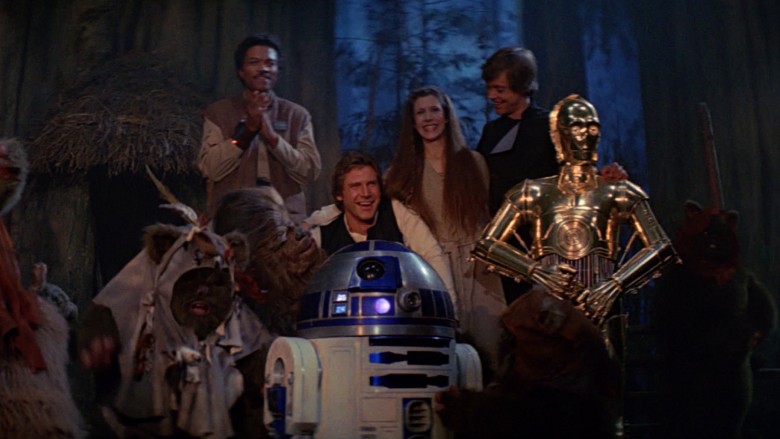Every year, the Library of Congress selects 25 films to add to its National Film Registry, acknowledging those movies that are of “cultural, historic or aesthetic importance.” In other words, these are the movies that are deemed worthy of saving for posterity. As a lover of old movies, film preservation has been an interest of mine for a long time, and I always look forward to seeing which titles get selected every year. Naturally, it’s especially pleasing when those selections are films I happen to like. This year’s batch, which was announced today, includes quite a few of those:
- Strangers on a Train, Alfred Hitchcock’s 1951 thriller
- What Ever Happened to Baby Jane?, the batshit-insane pairing of real-world rivals Bette David and Joan Crawford
- Richard Pryor: Live in Concert, still one of the funniest comedy concert films ever, in my opinion
- Wes Craven’s A Nightmare on Elm Street, a GenX horror classic
- The Talking Heads’ concert film Stop Making Sense, which I fondly remember dancing along to one night at the University of Utah’s student union
- Peter Jackson’s The Fellowship of the Ring
- And Wall-E, an animated delight that plays like a silent romance for something like half of its runtime
But of course the one I’m most enthused about making the cut is Return of the Jedi.
With Jedi‘s selection, all three parts of the “Holy Trilogy” are now present on the Registry — Star Wars was inducted in 1989 as part of the Registry’s “first class,” and The Empire Strikes Back in 2010 — and that means that Mrs Davis, my third-grade teacher who once snarled so nastily at me that Star Wars was a trashy waste of time has been overruled by our nation’s arbiters of culture. And yes, I do feel vindicated by that, thank you for asking!
It’s just too bad that Lucasfilm isn’t cooperating with the Registry’s mission.
You see, the Library of Congress archives a 35mm print of each inductee for future preservation efforts, and the last I heard, Lucasfilm has refused to provide the Library with prints of the original original trilogy, the unaltered pre-1997 editions that we grew up with, which are of course the versions that made the actual impact on our culture.
Long-time readers of this blog just rolled their eyes, I’m sure. “Oh no, he’s on about this again.” Well, yeah, I am. And no, I will never stop tilting at this particular windmill. Because it’s one thing to withhold the pre-97 editions from home video release or even to block them from public screenings — that’s aggravating, but there are workarounds, as most hardcore fans now know — but to deny the Library of Congress access to the specific version of a work that has been deemed significant… well, it’s a slap in the face of the very concept of the Registry, isn’t it? A Registry that exists in part, ironically, because of George Lucas’ passionate lobbying for it back in the 1980s. But of course, if you look closely at what he said back then, he was concerned with saving films from corporate tampering and neglect, not from his own. George has stubbornly maintained since the mid 1990s that the versions we grew up on were really only rough drafts that ought to be forgotten, and that the Special Editions (or whatever the latest home-video releases with subsequent tinkering are called) are the “real” trilogy.
When Disney acquired the franchise a few years back, I hoped that they would see the value of doing a modern restoration and transfer of the originals. I envisioned them releasing a box set containing all the versions of these films in modern-quality presentations so that the consumer could ultimately decide which version they preferred to watch. There is precedent for this: The Godfather trilogy, Close Encounters of the Third Kind, Apocalypse Now, and most notably — because it’s the most comprehensive — Blade Runner have all been handled in this way. But evidently George made it a condition of his deal with the Mouse that his preferred version was going to be the only version. Either that, or Disney doesn’t think the originals would sell, which I’m convinced is untrue.
Ultimately, it’s no longer that big a deal for resourceful fans. In the past 20 years, an underground culture has developed that’s dedicated to preserving and distributing the versions of these films that we old farts remember. As a result, there is now a bewildering array of bootlegs floating around out there, including a couple that were sourced and scanned from actual film prints that are in private hands (which puts the lie to George’s insistence that these films “no longer exist” and could never be reconstituted). The so-called “Despecialized Editions” are probably the best-known of the boots, and it seems like everyone has a copy of those. I’d still prefer to have an officially sanctioned restoration and release — what can I say, I crave validation of my tastes — but in the meantime, there are options for home viewing, and I’m glad of that.
This situation with the Film Registry, though… that’s a whole other outrage, on a whole other order of magnitude. It’s not right that all Lucasfilm is willing to provide them is the 1997 edition. It’s just not right. Until and unless someone gets a 35mm print of the original, historically important, real Star Wars films to the Library of Congress, placing the trilogy on the Registry is little more than lip service. I may have won my remembered beef with Mrs. Davis, but in light of the details where the devil dwells, it feels like something of a Pyrrhic victory.


